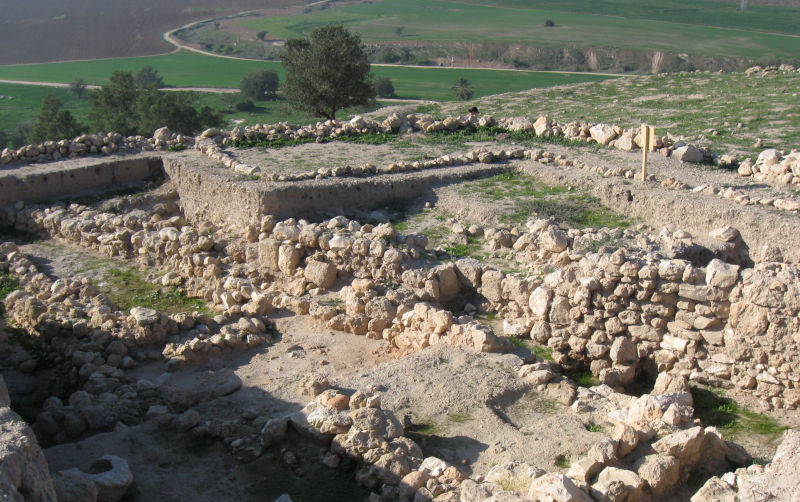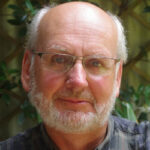Visits to the historical sites of Israel and beyond provide stark reminders that the past – including the recent past – is always with us, with places and monuments marking conflicts of ideologies and conflicts of people.
The region of the Levant – Israel, the Palestinian territories, Jordan, Syria and Lebanon – are blessed with the richness of archaeological heritage but cursed with the weight of history. Their monuments to the deep past exist alongside monuments which mark recent history: an archaeology of the present.
Heritage – a broader and more familiar term than archaeology – means very different things to different people. Once archaeologists would distinguish and limit the subject of their study by a time frame – as students of a past as they defined it. As European archaeologists trained two generations ago, we would rapidly remove the “post-medieval” layers there to get to the “real” levels of interest – but no longer. The past is then, the past is now.
I visited many archaeological sites in the region while researching for my strictly secular history of religious origins, Creating God. But alongside older heritage sat items of newer heritage: monuments that mark the conflicted world of the region today.
The Levant links Africa, Asia and Europe. It was through the Levant that the first of our ancestors Homo erectus left Africa; modern humans spread through that area into Europe. A “holy land” to three monotheistic religions, conflicts over its land dominate than five millennia of history from the Bronze Age to today. The larger parts of modern Israel, the area of Judea which included Jerusalem, were under foreign rule for all but 104 years between the 700s BCE and 1948: Assyrians, Babylonians, Achaemenid Persians, Hellenistic Ptolemies and Seleucids before the Hasmonean era of effective autonomy, and then Romans, Byzantines, Muslim Arabs, Crusaders, Ayyubids and Mamluks, Ottomans and British.
Sites and monuments from all these periods and earlier are in extraordinary profundity across the landscape; but so, too is the material heritage which attests the conflicts and history since the United Nations declared in 1947 that Palestine would be separated into separate Jewish and Arab states with Jerusalem shared under international control.
The results we know well, but given its dominance in current news as much as religious and historical traditions, we sometimes forget how small is the area of Israel and Palestine. Israel today is 21,000 sq km, with more than half being the Negev; the balance is about the size of Greater Sydney. The West Bank and Gaza represent 6000 sq km. Standing at Umm Qais (ancient Gadara) in Jordan, I could look down past the occupied Golan Heights of Syria, beyond the Sea of Galilee in Israel to the mountains of Lebanon 50 km away, with the Palestinian West Bank out of sight less than 35 km to the south. Alongside me Palestinian families from within Jordan were visiting the site to share the same view.
A visit to the site of Tell es-Safi in Israel – identified with the biblical city of Gath – brought the more recent past dramatically alongside the distant past. As a typical Middle Eastern tell this location holds a deep sequence of archaeological levels: from Early Bronze Age to a Crusader fortification. But the latest remains, now heavily overgrown, are those of a Palestinian village whose residents had been driven out by Israeli forces in during the 1948 conflict that followed the declaration of the state of Israel. People who had once lived on top of an archaeological sequence were now a part of an archaeological sequence.
To the south of the city of Jerusalem is another important historical site: Ramat Rahel, near an Israeli kibbutz. Excavations have shown the richness and importance of this site, and stimulated suggestions that it was the major administrative centre when the Persian Achaemenids ruled the region they called Yehud from the 6th century, if not earlier. But within the now exposed ruins of the site is a monument marking a visit to excavations in September 1956 by five hundred people attending a conference of the academic Israel Exploration Society. An outpost of the Jordanian Legion across the then border with Israel opened fire on the group, killing four people and wounding seventeen. What was once a modern atrocity at a site of history has now become part of that history itself, and a monument to the event is part of the rich material culture of the place.
To the north of the Sea of Galilee just east of the River Jordan lies the site of et-Tell identified by many scholars with ancient Bethsaida, home in New Testament tradition to apostles Peter, Andrew and Philip. Here continuing excavations have revealed a deep history from the Bronze Age, Iron Age, Hellenistic and Roman periods. But the visible ruins also include those of a Syrian military command post in operation before it was captured by Israeli forces in 1967; for this site lies within the area of the Golan Heights occupied by Israel since their successful campaign in the Six-Day War. Again, what was once the present physically imposed on the past is now part of the archaeological heritage of the site and a reminder that a high location on a sensitive border had continuing uses through time.
Today despite the Palestinian Authority’s responsibility for archaeology and heritage in the West Bank, the Israel Antiquities Authority has taken up the management of many sites in the occupied territories. The Israeli non-profit organisation Emek Shaveh has lobbied long and consistently against the interventions of Israeli archaeology beyond its internationally recognised remit. Meanwhile leading US scholars have recently drawn attention to the substantial destruction of cultural heritage arising from Israel’s current attack on the people of Gaza.
There is something fixed and undeniable about the remains of settlement in the innumerable archaeological and historical sites of the Levant (although their interpretation reflects the interests, contexts and prejudices of individual scholars). Museums are much more ideological: they present the world as the museum staff and funders (and perhaps their visitors) prefer. So the Holocaust History Museum which is the major feature of the Yad Vashem complex is a powerful testimony to the tragic history which led to the Nazi persecution of European Jews. In Ramallah, the administrative centre of the Palestinian West Bank, the Yasser Arafat Museum goes beyond its name to present a narrative of the modern Palestinian political movement. The Israel Museum retains professional and scientific credibility in its displays of archaeological eras and history of the region, while the Museum of the City of Jerusalem in the Citadel (promoted as “The Tower of David”) presents an ideologically driven nationalist narrative of Jewish history working towards a climax in 1948. Museums tell us something about the past; they also tell us much about the present when we appraise their presentation.
Heritage is not an absolute. We all have our heritage; each community identifies its heritage alongside its myths of the past which feed into its perceptions of the present. The pride that heritage often conveys can turn, too, into a weapon of hostility. A critical view of what we mean by the heritage of a period, a region, a people is an obligation on all of us.
Robin Derricourt is a writer, publisher, archaeologist and an Honorary Professor of History at the University of New South Wales

